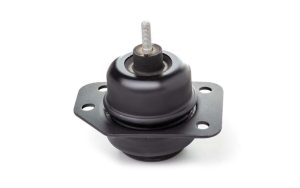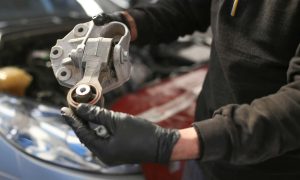Engine mounting, often called an engine mount, is a small but essential component that plays a big role in your car’s smooth operation. Without it, your driving experience would be far noisier, rougher, and potentially unsafe. In this article, we’ll explore what engine mountings do, signs that they might be failing, and how to replace them effectively.
Purpose of Car Engine Mounting

Engine mounting is a rubber-and-metal component that secures your engine to the chassis while absorbing vibrations and shocks. Its design ensures that the powertrain remains stable during acceleration, braking, and turning.
Main functions include:
-
Support: Holds the engine in position and prevents excessive movement.
-
Vibration Damping: Reduces engine vibrations transmitted to the cabin.
-
Noise Reduction: Limits the amount of noise entering the passenger area.
-
Alignment Maintenance: Keeps the engine and transmission properly aligned for smooth power transfer.
| Function | Importance for Vehicle Performance |
|---|---|
| Engine Support | Prevents damage to connected parts |
| Vibration Absorption | Improves driving comfort |
| Noise Isolation | Ensures a quieter cabin |
| Proper Alignment | Enhances drivetrain efficiency |
Symptoms of Worn or Damaged Engine Mounting
Over time, engine mounts wear out due to heat, oil exposure, and constant stress. Recognizing the symptoms early can prevent more expensive repairs.
Common signs include:
-
Excessive Vibrations
-
When the rubber inside the mount deteriorates, vibrations increase and can be felt through the steering wheel or seats.
-
-
Engine Movement or Rocking
-
During acceleration or deceleration, a worn mount can cause the engine to shift excessively.
-
-
Clunking or Banging Noises
-
Damaged mounts may cause knocking sounds when changing gears or going over bumps.
-
-
Misaligned Engine Components
-
Can lead to premature wear on hoses, wiring, or exhaust parts.
-
-
Visible Cracks or Damage
-
Physical inspection may reveal torn rubber or loose bolts.
-
| Symptom | Possible Cause | Urgency Level |
|---|---|---|
| Excessive vibration | Rubber deterioration | Medium |
| Clunking noise | Broken or loose mount | High |
| Engine shifting | Worn rubber/metal separation | High |
| Visible damage | Rubber cracking or bolt failure | High |
Causes of Engine Mount Failure
Several factors can shorten the lifespan of an engine mounting:
-
Heat and Age: Rubber loses elasticity over time.
-
Oil or Fluid Leaks: Degrades rubber components quickly.
-
Aggressive Driving: Rapid acceleration and hard braking put extra strain on mounts.
-
Poor Road Conditions: Frequent bumps and potholes increase wear.
Replacement Tips for Engine Mounting
Replacing an engine mount is not overly complex, but it does require care and proper tools.
Basic replacement steps:
-
Safety First
-
Park on a flat surface, engage the parking brake, and disconnect the battery.
-
-
Support the Engine
-
Use a hydraulic jack with a wood block to gently support the engine weight.
-
-
Remove the Damaged Mount
-
Loosen and remove bolts connecting the mount to the chassis and engine.
-
-
Install the New Mount
-
Position it correctly and tighten bolts to the manufacturer’s torque specification.
-
-
Double-Check Alignment
-
Ensure engine sits properly before lowering it back into place.
-
Replacement Tips:
-
Always use quality OEM or equivalent parts.
-
If one mount is bad, check all others for wear.
-
Avoid over-tightening bolts to prevent damage.
Maintenance Practices to Extend Engine Mount Life
While engine mounts will eventually wear out, you can extend their lifespan with simple preventive care:
-
Fix oil leaks promptly to prevent rubber degradation.
-
Drive smoothly to reduce strain on mounts.
-
Inspect during routine servicing for early signs of damage.
-
Avoid overloading the vehicle which puts extra stress on the powertrain.
When to Seek Professional Help

Although some DIY enthusiasts can replace mounts at home, professional installation ensures correct torque, alignment, and safety. If you notice severe vibrations or loud knocks, have the mount inspected immediately.
Final Thoughts
A healthy engine mounting system ensures a smooth, quiet, and safe driving experience. Ignoring worn mounts can lead to costly repairs and reduced vehicle comfort.
If your vehicle shows any of the above symptoms, consider replacing the faulty mount without delay. You can find reliable, high-quality replacements here: buy Engine Mounting online.